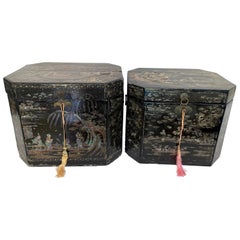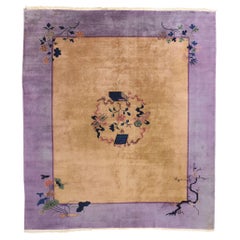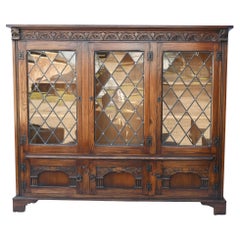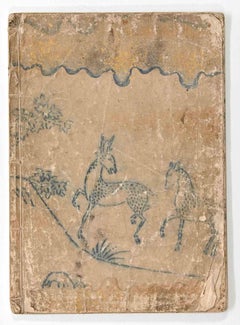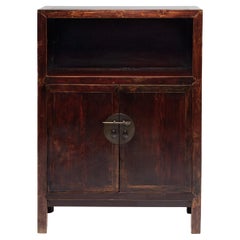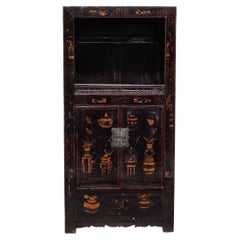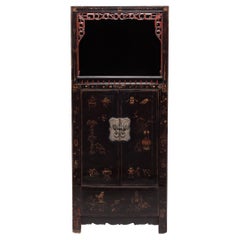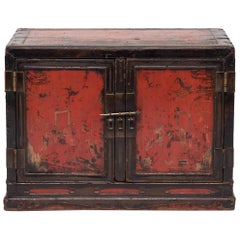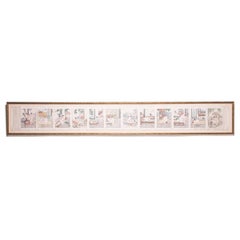Chinese Antique Book
Late 18th Century Chinese Qing Chinese Antique Book
Lacquer
Early 20th Century Chinese Art Deco Chinese Antique Book
Wool
1920s Chinese Antique Book
Wood
19th Century Modern Chinese Antique Book
Paper, Woodcut
Early 20th Century Chinese Qing Chinese Antique Book
Elm
Mid-19th Century Chinese Qing Chinese Antique Book
Elm
Mid-19th Century Chinese Qing Chinese Antique Book
Elm
Mid-17th Century Chinese Ming Chinese Antique Book
Wood
Mid-19th Century Chinese Qing Chinese Antique Book
Silk, Paper
Early 19th Century Chinese Qing Chinese Antique Book
Elm
Late 18th Century Chinese Qing Chinese Antique Book
Metal
Early 20th Century Chinese Qing Chinese Antique Book
Porcelain
Early 19th Century Italian Empire Chinese Antique Book
Wood
18th Century Chinese Antique Book
Paper
Late 19th Century Chinese Qing Chinese Antique Book
Elm
Early 19th Century Chinese Qing Chinese Antique Book
Lacquer
1920s Chinese Chinoiserie Chinese Antique Book
Wood
16th Century Chinese Antique Book
Paper
17th Century Chinese Antique Book
Paper
Early 20th Century Chinese Chinese Chippendale Chinese Antique Book
Metal
17th Century Chinese Ming Chinese Antique Book
Hardwood
18th Century Chinese Antique Book
Paper
Late 19th Century Chinese Late Victorian Chinese Antique Book
Wood
15th Century and Earlier Chinese Chinese Export Chinese Antique Book
Stoneware
Early 18th Century Chinese Chinese Export Chinese Antique Book
Porcelain
Early 18th Century Chinese Chinese Export Chinese Antique Book
Porcelain
Early 18th Century Chinese Chinese Export Chinese Antique Book
Porcelain
18th Century Chinese Antique Book
Paper
Late 17th Century Chinese Qing Chinese Antique Book
Porcelain
15th Century and Earlier Chinese Other Chinese Antique Book
Stoneware
19th Century German Chinese Antique Book
Early 19th Century English Georgian Chinese Antique Book
Pottery, Ironstone
Early 19th Century English Georgian Chinese Antique Book
Ironstone
Early 19th Century English Chinoiserie Chinese Antique Book
Ironstone
1820s English Regency Chinese Antique Book
Ironstone
Early 19th Century English Georgian Chinese Antique Book
Ironstone
Early 19th Century English Regency Chinese Antique Book
Ironstone
Late 19th Century English Chinoiserie Chinese Antique Book
Ironstone
Late 19th Century English Chinoiserie Chinese Antique Book
Ironstone
Early 19th Century English Chinoiserie Chinese Antique Book
Ironstone
Early 19th Century English Georgian Chinese Antique Book
Ironstone
Early 20th Century Korean Other Chinese Antique Book
Wood
1850s French Louis XIII Chinese Antique Book
Oak
1920s American Realist Chinese Antique Book
Drypoint
19th Century Chinese Chinese Antique Book
Elm, Pine, Lacquer
1890s Chinese Chinese Export Chinese Antique Book
Elm
19th Century Chinese Chinese Antique Book
Wood
19th Century Chinese Ming Chinese Antique Book
Softwood, Lacquer
19th Century English Chinese Antique Book
Earthenware
1830s Chinese Chinese Export Chinese Antique Book
Hardwood
18th Century British George III Chinese Antique Book
Abalone
18th Century and Earlier Chinese Antique Book
19th Century Chinese Antique Book
19th Century Chinese Antique Book
18th Century and Earlier Chinese Antique Book
Mid-19th Century Chinese Qing Chinese Antique Book
Wood
19th Century Chinese Chinese Antique Book
Elm
18th Century and Earlier Chinese Chinese Antique Book
Elm
18th Century and Earlier Chinese Chinese Antique Book
Elm
Early 20th Century Chinese Qing Chinese Antique Book
Elm, Fir
- 1
Chinese Antique Book For Sale on 1stDibs
How Much is a Chinese Antique Book?
- 1stDibs ExpertNovember 4, 2024To identify antique Chinese furniture, look carefully at its details. Chinese craftsmen often built furniture using mortise and tenon joinery, eliminating the need for nails and screws. If you see this type of hardware, your piece is likely not at least 100 years old, especially if the hardware still looks new and shiny. Since antique furniture was handmade, you will normally see slight imperfections, such as tool marks or slight variations in carvings. Pieces that appear completely uniform and pristine are less often genuine antiques.
When present, maker's marks can also be helpful. Research the marks to learn more about when the maker was active and producing pieces like yours. Alternatively, you can have a certified appraiser or experienced antique dealer evaluate your furniture for you.
Shop an assortment of antique Chinese furniture.  PAGODA REDOctober 7, 2020
PAGODA REDOctober 7, 2020To determine the age of a Chinese furniture piece, look carefully at the joinery and finish. Natural expansion and contraction of the wood over time will cause a joint to protrude or retract, distorting a once-seamless fit. Antique lacquer finishes become crackled and worn over time. Areas of exposed wood, such as the underside of a table, the footrest of a chair, or the back of a cabinet should appear raw and dry compared to the finished surface. With use, the legs of tables and chairs become weathered near the bottom from precipitation and use.
 Lotus GallerySeptember 23, 2020
Lotus GallerySeptember 23, 2020The best way to know is to take it to an expert, such as an appraiser, reputable dealer or auction house, or museum
